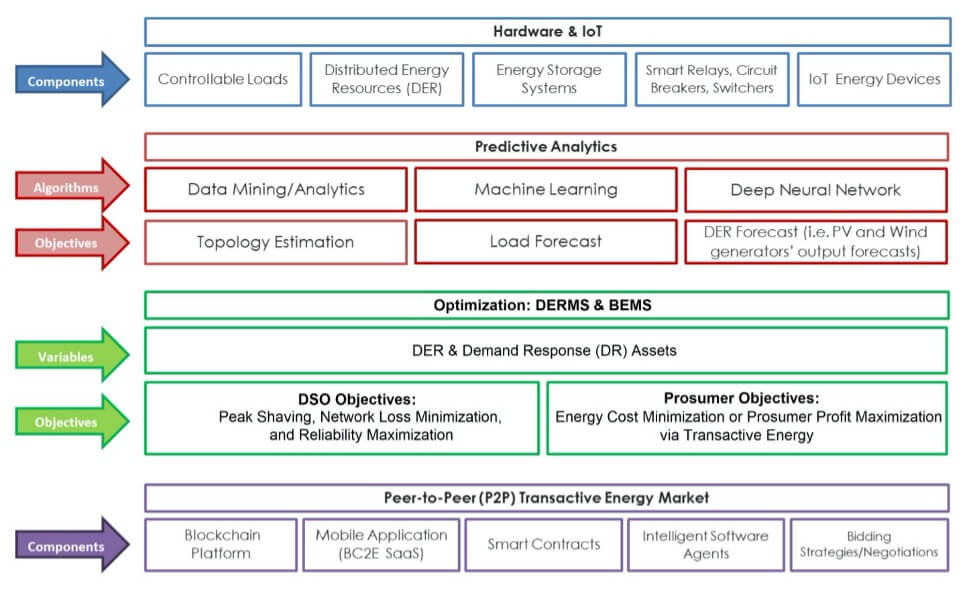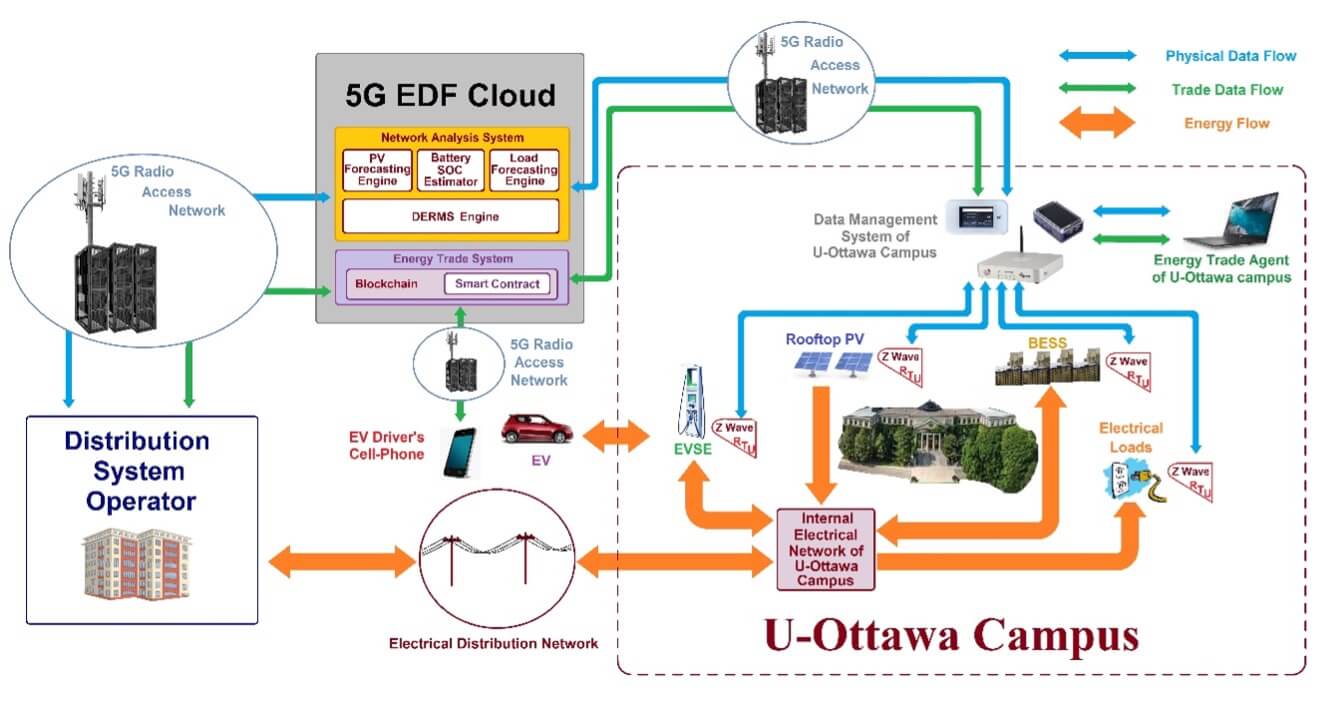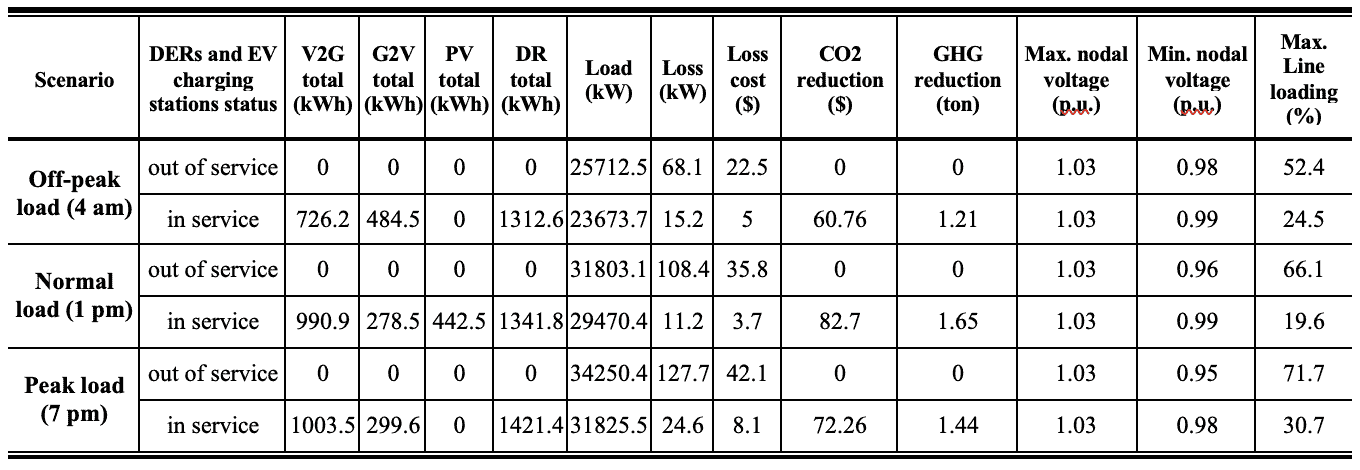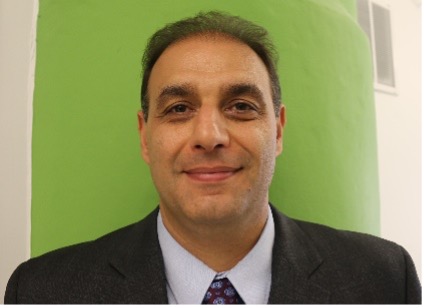An Efficient SaaS for Transactive Energy among local Grid Operators and Prosumers
Written by Ashkan R. Kian
Artificial Intelligence (AI), distributed optimization (DO) algorithms with efficient consensus mechanisms among stake holder agents, and Blockchain based Transactive Energy platform (BCTE) seem to be the necessary SaaS/software tools to help variety of Smart Grid stake holders including ISO/TSO/IESO, PU, LDC, Microgrid and net-zero community developers and operators to efficiently and optimally monitor, control and trade energy (and A/S) with DER, DR and EV-fleet prosumers.
The architecture and use-cases for the central SCADA, ADMS and Market Clearing software for ISO/TSO/IESO and PU/LDC are changing rapidly as DER, DR and EV-fleet prosumers are allowed to integrate and exchange energy (and A/S) with the local grid operators (i.e., LDC and PU) per FERC order 2222.
FERC order 2222 changes the current SCADA, ADMS and Energy (and A/S) market clearing software architecture, features and functionalities. Most of the current SCADA and ADMS commercial software tools do not have DERMS (DER Management System/Software) integrated in them and that makes the real-time state estimation and optimal dispatch of the DER, DR and EV-fleet challenging for the ISO/TSO/IESO and PU/LDC firms due to major grid topology changes that the current SCADA/ADMS software cannot handle.
Another important challenge with FERC order 2222 is that existing central energy (and A/S) markets and their respective market clearing software tools (e.g., SCUC and SCOPF) in north America cannot efficiently model and integrate the DER, DR and EV-fleet market participants (or prosumers of energy) within the SCUC/SCOPF software tools. There are two major problems with central energy (and A/S) market clearing software architecture to include thousands of DER, DR and EV-fleet prosumers in the market clearing process : 1) day-ahead, hour-ahead and real-time energy (and A/S) market clearing process will take much longer times to converge due to the a very large MILP/MINLP (mixed integer linear/non-linear programming) size optimization problem to be solved for the next 24 hours, next hour or next 5 minutes; 2) it is very costly to develop a central database that can manage registration, data logging and communications (command & control) of thousands of DER, DR and EV-fleet prosumers with huge amounts of dynamic data. Therefore, we need distributed autonomous transactive energy markets for the PU/LDC firms within their control areas to register and trade energy (an A/S) with local DER, DR and EV-fleet in a (cyber) secure, efficient and user-friendly manner.
Distributed ledger technologies, like blockchain, are peer-to-peer networks that enable multiple members to maintain their own identical copy of a shared ledger. Rather than requiring a central authority to update and communicate records to all participants, DLTs allow their members to securely verify, execute, and record their own transactions without relying on a middleman [1].
Figure 1 presents an advanced SaaS/software architecture suitable for numerous Smart Grid applications and stake holders including Transactive Energy Markets:

Figure 1. An efficient SaaS architecture for Transactive Energy Markets
Figure 1 presents four layers for the proposed SaaS/software for implementing an efficient, cyber-secure and user-friendly Transactive Energy Market: 1) IoT and AMI layer to collect all the metered data from DER, DR and EV-fleet; 2) Predictive Analytics API layer to use the IoT/AMI data for network load, solar PV & Wind generation and EV-fleet SOC and charging demand predictions in short-term (i.e., 5 minutes to 1 hour ahead of time); 3) DERMS and BEMS API layers for near real-time optimal dispatching (or scheduling) of DER, DR and EV-fleet based on the DSO’s objectives (i.e., peak-shaving, VVO, network loss minimization, loss of load prevention, etc.) or net-zero building manager’s objectives (i.e., energy conservation, cost reduction or TEM revenue maximization); 4) Blockchain based Transactive Energy (BCTE) API layer for implementing an agent-based autonomous distributed TEM for trading energy (and A/S) among the PU/LDC and numerous Prosumers in a cyber-secure, efficient and user-friendly manner.
The above presented SaaS architecture is currently being implemented in a pilot project with Hydro Ottawa (HO) and University of Ottawa (UO) in Ontario, Canada to monitor and optimally control the solar PV (340 kW), DR (up to 200 kW) and EV-fleet (around 30 with approximately 750 kWh charging/discharging demand/supply capacity) to help the IESO/HO to predict and optimally manage the UO campus load (buildings electric loads and EV-fleet dynamic charging demands) for the upcoming 24 hours (with 10 to 60 minutes granularity). Figure 2 shows the proposed SaaS architecture, energy flow, data & information flows and financial transaction flow among different modules and devices for this innovative pilot project.

Figure 2. The Process and Data flow for the U-Ottawa Smart Campus project and DER, DR and EV-fleet Energy services to Hydro Ottawa
Table 1 presents final accepted TE contracts between Hydro Ottawa (or DSO) and DR and EVSE aggregators (or UO) with scheduled energy and TE cleating price for three network loading scenarios.
Table 2 presents the environmental (GHG and CO2 penalty reduction), network efficiency (network loss and loss cost), G2V and V2G energy exchanges between the EVSE stations and the local grid (UO campus), maximum and minimum nodal voltages in the network (in p.u.) and maximum transformer/line loading (%) due to each TE contract and for each network loading scenario.
Table 1: TE contract information between DSO (or HO) and DR and EVSE aggregators (or UO)

Table 2: Environmental, voltage stability, and network efficiency metrics for 3 different loading conditions

Acknowledgement
The cooperation of Mr. Raed Abdullah (Lead Distribution Engineer, Hydro Ottawa), and Professor Henry Schriemer (School of Electrical Engineering, U-Ottawa) to gather the UO’s feeder data and their insightful comments about the SaaS based Transactive Energy platform development and implementation for the U-Ottawa campus are greatly acknowledged and appreciated.
References
- An overview of blockchain science and engineering, Ghassan Karame, Michael Huth and Claire Vishik, June 03, 2020, The Royal Society Publishing, https://doi.org/10.1098/rsos.200168
This article edited by Ali Nabavi
For a downloadable copy of the May 2021 eNewsletter which includes this article, please visit the IEEE Smart Grid Resource Center.

To have the Bulletin delivered monthly to your inbox, join the IEEE Smart Grid Community.
Past Issues
To view archived articles, and issues, which deliver rich insight into the forces shaping the future of the smart grid. Older Bulletins (formerly eNewsletter) can be found here. To download full issues, visit the publications section of the IEEE Smart Grid Resource Center.




